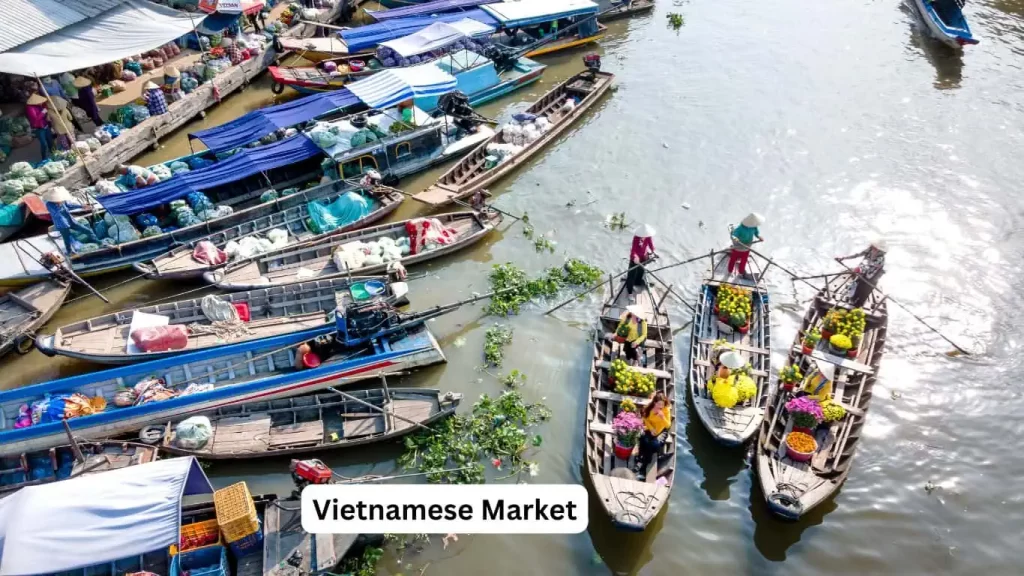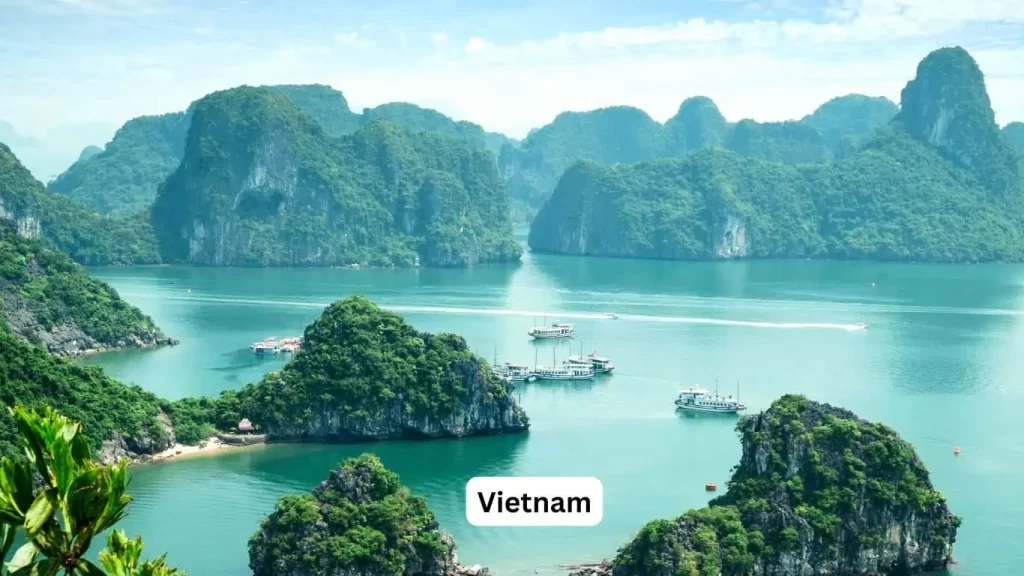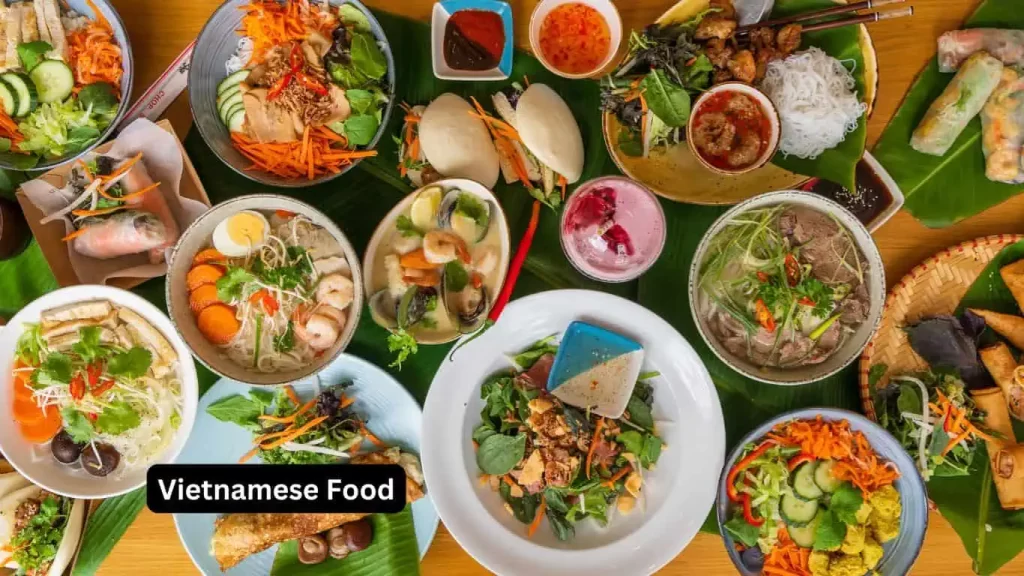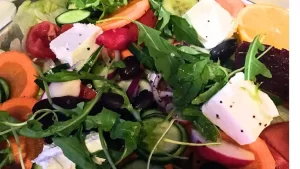Gluten-Free Vietnam: Top Guide to Beaches and Food (2025)
Vietnam, with its rich history, stunning landscapes, and vibrant culture, has become an increasingly popular destination for travelers worldwide. For those following a gluten-free diet, exploring this Southeast Asian gem might seem challenging at first. However, with proper planning and knowledge, Vietnam can be a dream destination for gluten-free travelers, offering many naturally gluten-free dishes and breathtaking experiences.
Best Time to Visit Celiac-Friendly Vietnam
The best time to visit Vietnam depends on the region you plan to explore. In general, the country experiences a tropical climate with distinct dry and wet seasons. For Central Vietnam, including popular destinations like Da Nang and Hoi An, the dry season typically runs from February to August, making it the ideal time for beach lovers and outdoor enthusiasts.
The period from February to April is considered the best time to visit Central Vietnam. During these months, you can expect pleasant temperatures, low humidity, and minimal rainfall. This is also the perfect time to enjoy the beautiful beaches of Da Nang, such as Non Nuoc Beach, My Khe Beach, and Bac My An Beach.
However, if you’re planning to visit multiple regions, it’s worth noting that the weather patterns can vary significantly. The high season for tourism in Vietnam generally falls between November and April, with peak season occurring during the Lunar New Year (Tet) celebrations in late January or early February.
What to See and Do in (Gluten-Free) Vietnam
Vietnam offers diverse attractions and activities for every type of traveler. Here are some must-visit destinations and experiences:
- Da Nang: This coastal city in Central Vietnam is known for its beautiful beaches, including Non Nuoc Beach, My Khe Beach, and Bac My An Beach. Da Nang Beach, stretching along the city’s coastline, is a great place for water sports and relaxation. Don’t miss the stunning Linh Ung Pagoda on Son Tra Peninsula, also known as Monkey Mountain.
- Beaches of Da Nang: The city boasts some of Vietnam’s most beautiful beaches. Non Nuoc Beach, with its fine white sand and gentle slope, is perfect for swimming and sunbathing. Tien Sa Beach and Thanh Binh Beach offer more secluded experiences, while Xuan Thieu Beach is known for its natural beauty and calm waters. For a detailed guide to Da Nang, including its best beaches, attractions, and gluten-free dining options, check out the comprehensive post: Best Da Nang Beaches: Your Perfect Vietnam Guide
- Hoi An Ancient Town: A UNESCO World Heritage site, Hoi An’s well-preserved old town is a charming blend of Vietnamese, Chinese, and Japanese influences. Stroll through its narrow streets, admire the historic architecture, and experience the magical atmosphere of the lantern-lit evenings.

- Hai Van Pass: This scenic mountain pass between Da Nang and Hue offers breathtaking views of the coastline and is often considered one of the most beautiful drives in Vietnam.
- Ho Chi Minh City: Formerly known as Saigon, this bustling metropolis is a must-visit for its vibrant street life, historical sites, and modern attractions.
- Son Tra Peninsula: Also known as Monkey Mountain, this peninsula offers stunning views, lush forests, and the famous Linh Ung Pagoda. It’s an ideal spot for nature lovers and those seeking tranquility.

Where to Stay in Vietnam
Vietnam offers a wide range of accommodation options to suit every budget and preference. In Da Nang, you’ll find numerous high-end resorts along the beachfront, particularly in the Ngu Hanh Son District. Many of these luxury resorts offer stunning views of the East Sea and easy access to the city’s most attractive beaches.
For those seeking a more authentic experience, consider staying in Hoi An’s Ancient Town. Here, you’ll find charming boutique hotels and homestays that offer a glimpse into traditional Vietnamese life.
In Ho Chi Minh City, opt for accommodations in District 1 to be close to major attractions and a wide variety of dining options.
Gluten-Free Dining in Vietnam
Vietnamese cuisine is naturally gluten-free friendly, with rice and rice noodles forming the base of many dishes. However, it’s essential to be cautious of certain ingredients and preparation methods. Here are some tips for gluten-free dining in Vietnam:
- Learn key phrases: Familiarize yourself with phrases like “Tôi không ăn được gluten” (I don’t eat gluten) and “Không có bột mì” (No wheat flour).
- Stick to naturally gluten-free dishes: Many Vietnamese dishes are inherently gluten-free, such as:
- Pho: A popular rice noodle soup (ensure the broth is gluten-free)
- Bun: Various dishes made with rice vermicelli
- Com: Dishes served with steamed rice
- Goi Cuon: Fresh spring rolls (ensure they’re not made with wheat wrappers)
3. Be cautious of sauces: Fish sauce is widely used in Vietnamese cuisine and is generally gluten-free, but always double-check. Soy sauce often contains gluten, so ask for it to be omitted or bring your own gluten-free alternative.
4. Street food caution: While street food is a significant part of Vietnamese culinary culture, it can be challenging to ensure gluten-free preparation. Opt for dishes you can see being prepared and ask about ingredients.
5. Communicate with staff: In restaurants, communicate your dietary needs clearly. Many establishments in tourist areas are familiar with gluten-free requirements.
6. Consider booking food tours: Look for gluten-free food tours in major cities. These can provide a safe and informative way to explore Vietnamese cuisine.
Best Gluten-Free Restaurants in Major Cities
When exploring the vibrant city of Ho Chi Minh, you’ll find some of the best gluten-free restaurants in Ho Chi Minh City, Vietnam, offering a variety of delicious and safe dining options. Notable places are Den Long – Home Cooked Vietnamese Restaurant and The Vintage Emporium, both known for their celiac-friendly menus.
If your travels take you to Hanoi, you’ll discover the best Celiac-friendly restaurants in Hanoi, Vietnam, providing equally delightful experiences, and ensuring that gluten-free travelers can enjoy the local cuisine without worry. While in Vietnam, don’t miss out on trying the local gluten-free beer options. Many restaurants offer gluten-free beer, allowing you to enjoy a refreshing drink while dining out.
A common question among travelers is, “Is pho gluten free in Vietnam?” Pho, a traditional Vietnamese noodle soup, is generally gluten-free when made with rice noodles and a broth free of gluten-containing additives. However, it’s always wise to confirm with the staff to ensure no wheat-based sauces are used.Overall, eating gluten-free in Vietnam is a rewarding experience, with many naturally gluten-free dishes to enjoy. Whether you’re savoring a bowl of pho or exploring the diverse gluten-free food Vietnam has to offer, you’ll find plenty of options to suit your dietary needs.
Guidelines for Gluten-Free Tourists in Vietnam
What to Avoid: While Vietnamese cuisine offers many naturally gluten-free options, there are still some potential pitfalls to be aware of. Soy sauce and oyster sauce, commonly used in many dishes, often contain gluten unless specifically labeled gluten-free. Be cautious with fried foods, as there’s a risk of cross-contamination in shared fryers. Steer clear of banh mi and other wheat-based breads, which are popular street foods. Most local beers contain gluten, so opt for wine, spirits, or certified gluten-free beer options when available.
What to Expect: Fortunately, rice-based cuisine dominates Vietnamese cooking, providing a solid foundation for gluten-free eating. You’ll find many naturally gluten-free options, particularly in traditional dishes. However, be prepared for potential language barriers when explaining your dietary needs, especially in less touristy areas. In popular tourist destinations, you’ll likely encounter increased awareness of gluten-free diets, with some restaurants offering dedicated gluten-free menus or dishes.
Popular Gluten-Free Vietnamese Dishes
- Mi Quang: A rice noodle dish from Central Vietnam, typically served with shrimp, pork, and a variety of herbs.

2. Banh Xeo: A crispy rice flour pancake filled with pork, shrimp, and bean sprouts.
3. Goi: Vietnamese salads made with fresh vegetables, herbs, and often topped with grilled meat or seafood.
4. Ca Kho To: Caramelized fish cooked in a clay pot, typically served with rice. (Double check for GF soy sauce)
5. Bun Cha: Grilled pork served with rice noodles, herbs, and dipping sauce.
Where to Find Gluten-Free Food in Vietnam
Please refer to the Gluten Free Interactive Travel Map to find restaurants that offer Gluten Free options. As always ask the waiting staff for help and GF recommendations.
Packing Tips for Gluten-Free Travelers
When preparing for your Vietnamese adventure, consider packing these essentials to ensure a smooth gluten-free journey:
- Gluten-free soy sauce packets: Soy sauce is widely used in Vietnamese cuisine, and regular soy sauce contains gluten. Pack small travel-size bottles of gluten-free soy sauce or tamari.
- Translation cards: Pack a card that explains your dietary restrictions in Vietnamese to help communicate with restaurant staff and vendors. These cards can be found online or created yourself.
- Gluten-free snacks: Bring non-perishable gluten-free snacks like energy bars, nuts, dried fruits, rice cakes, and gluten-free crackers to have on hand during travel and excursions.
- Bring a Small Cutting Board and Knife: These can be useful for preparing fresh fruits and vegetables in your hotel room or while on the go, ensuring they haven’t been contaminated by gluten.
- Portable Gluten-Free Meals: Consider packing some portable gluten-free meal options such as instant gluten-free oatmeal packets, soup cups, or freeze-dried meals.
Cultural Etiquette and Dining Customs in Vietnam
Understanding local customs can help you navigate social situations while maintaining your gluten-free diet:
- Politely refusing food: In Vietnam, it’s acceptable to say “Không, cám ơn” (No, thank you) when offered food you can’t eat. Explain your dietary restrictions if pressed.
- Family-style dining: Many meals in Vietnam are served family-style. Don’t be shy about asking about ingredients or using your own serving utensils to avoid cross-contamination.
- Tipping: While not traditionally expected, a 5-10% tip in restaurants is becoming more common in tourist areas. In high-end establishments, a service charge may already be included.
Health and Safety Tips
Staying healthy while traveling goes beyond just avoiding gluten:
- Stay hydrated: Vietnam’s tropical climate can lead to rapid dehydration. Carry a reusable water bottle and drink bottled or purified water.
- Food safety: Stick to peeled fruits, thoroughly cooked foods, and avoid raw vegetables unless you’re sure they’ve been properly washed.
- Travel insurance: Consider comprehensive travel insurance that covers food-related illnesses and medical evacuation, which is especially important for those with celiac disease.
Beach Life and Outdoor Activities
Vietnam’s coastline offers numerous opportunities for beach lovers and outdoor enthusiasts. In Da Nang, My Khe Beach, often referred to as one of the most beautiful beaches in the world by Forbes Magazine, is a perfect place for sunbathing, swimming, and water sports. The long stretch of white sand and crystal-clear blue water make it an ideal spot for both relaxation and activities like jet skiing and parasailing.
Non Nuoc Beach, located at the foot of the Marble Mountains, offers a more serene experience with its soft sand and gentle waves. It’s an excellent place for an early morning walk or to watch the sunset.
For those seeking adventure, the Son Tra Peninsula (Monkey Mountain) provides opportunities for hiking and wildlife spotting. The peninsula is home to the rare red-shanked douc langur and offers breathtaking views of the coastline.
Lang Co Beach, a short drive from Da Nang, is a picturesque lagoon with a long stretch of white sand, backed by palm trees and overlooked by the Hai Van Pass. It’s a great place to experience a more traditional Vietnamese fishing village atmosphere.
Conclusion
Vietnam offers a unique blend of natural beauty, rich culture, and delicious cuisine that can be enjoyed even by those following a gluten-free diet. From the bustling streets of Ho Chi Minh City to the serene beaches of Da Nang and the historic charm of Hoi An, there’s something for every traveler.
By being prepared, communicating your dietary needs clearly, and embracing the naturally gluten-free aspects of Vietnamese cuisine, you can fully immerse yourself in this fascinating country. Whether you’re lounging on the golden sands of My Khe Beach, exploring the ancient streets of Hoi An, or savoring a bowl of gluten-free Pho, Vietnam promises an unforgettable journey for gluten-free travelers.
Remember to respect local customs, be open to new experiences, and always prioritize your health and safety. With its warm hospitality, stunning landscapes, and rich culinary traditions, Vietnam is truly a dream destination for gluten-free adventurers. Save this link to Vietnamese tourism websites for further reading.
Planning a gluten-free trip to Asia? Check out our guide to Gluten-Free Thailand for more inspiration.
Have you traveled gluten-free in Vietnam? Share your favorite dishes or travel tips in the comments below!







